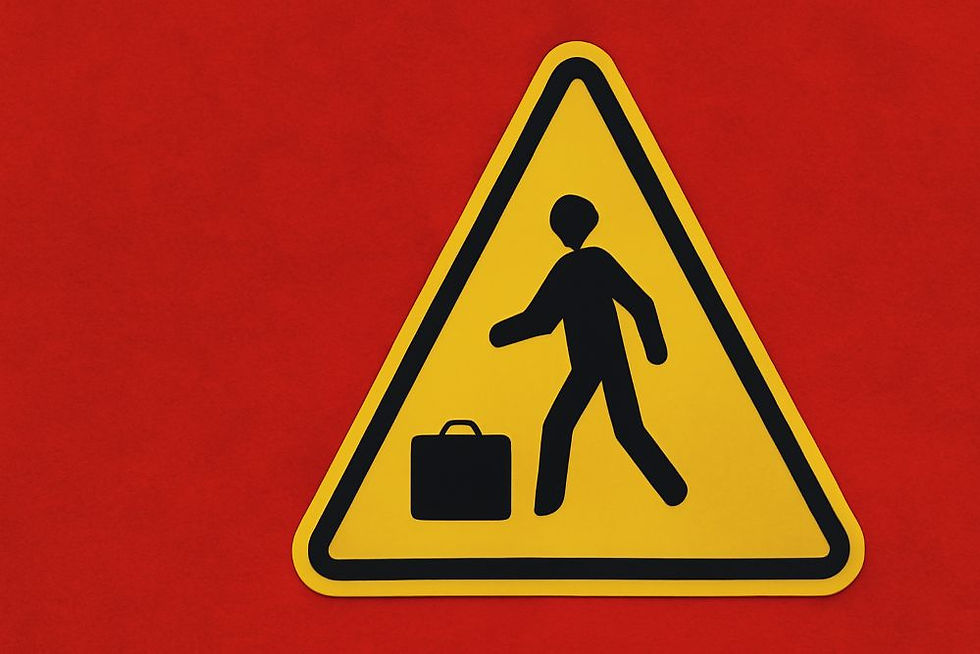France’s Growing Debt Crisis: Can the Eurozone Cope?
- Admin
- Sep 9, 2025
- 3 min read

France, known for its fine wine, world-class infrastructure, and revolutionary spirit, is now struggling with a financial crisis that is far from romantic. As Europe’s second-largest economy, it faces a mounting debt that threatens not just its stability but also the stability of the wider eurozone. With political gridlock, rising borrowing costs, and increasing market pressure, France is sinking deeper into a debt trap that feels like quicksand.
As of early 2025, France’s public debt is €3.345 trillion, about 114% of its GDP. This makes it the third-highest in the eurozone, after Greece and Italy. In simple terms, for every euro of economic output, France owes €1.14. The cost of servicing this debt is also rising rapidly. Interest payments are expected to increase from €59 billion in 2024 to over €100 billion by 2029. If this trend continues, debt repayments could exceed spending on defense and education, making them the largest budget items.
The deficit, ranging between 5.4% and 5.8% of GDP, stays well above the EU’s 3% goal. France is also paying more on its long-term debt than some smaller, more vulnerable economies like Greece and Spain. These aren’t just numbers on paper; they’re absolute limits that affect businesses, consumers, and a sluggish economy that finds it hard to grow faster than 1–2% each year.
France didn’t arrive at this situation overnight. The crisis is a combination of short-term shocks and long-term structural issues and weaknesses.
The immediate trigger was the fall of Prime Minister François Bayrou’s government after a no-confidence vote. His proposed €44 billion austerity package of spending cuts and tax hikes collapsed in parliament, where left-wing and far-right parties united to block it. This deadlock, fueled by President Emmanuel Macron’s 2024 snap election gamble, has paralyzed reforms and rattled markets. Investors now demand higher risk premiums to hold French bonds, driving up borrowing costs further.
COVID-19 and the energy crisis following Russia’s invasion of Ukraine forced Paris into significant emergency spending. However, France’s deeper issues include public spending at 57% of GDP, strict labor laws, an expensive welfare state, and an aging population that strains pension systems. Unlike Italy and Greece, which have managed to run primary surpluses, France has been unable to balance its budget.
As global rates rise, France’s debt becomes more expensive to refinance. Some analysts now call France Europe’s “new problem child,” replacing Italy in the spotlight. French banks, which hold €600 billion in sovereign debt, could be exposed if defaults rise, potentially requiring recapitalization worth €100–150 billion.
In short, France is caught in a vicious cycle: political paralysis prevents reforms, markets lose confidence, borrowing costs increase, growth stalls, and the debt burden grows deeper.
France’s political DNA has long been characterized by social resistance to reforms from the Yellow Vest protests to nationwide pension strikes. Today, its fragmented parliament intensifies this pattern. With Macron’s centrist bloc weakened, extremists on both ends hold disproportionate influence, leading to unstable governments. Bayrou was the third prime minister in just a year, evidence of the volatility.
Economically, France excels in luxury goods, agriculture, AI, and nuclear energy. However, heavy bureaucracy and high taxes hinder innovation and discourage foreign investment. Persistent low growth makes it more difficult to “grow out” of debt compared to rapidly expanding economies.
Revive a version of Bayrou’s plan but modify it. Focus on cuts to administrative waste and subsidies while implementing progressive taxes, such as a levy on the ultra-wealthy. A 60:40 balance of spending cuts and revenue increases could stabilize finances without hurting the middle class.
France could consider easing its strict labor laws, raising the retirement age, and offering tax incentives for green technology and AI startups. These measures could boost annual growth closer to 2–3%, making debt more manageable.
France may advocate temporarily relaxing EU fiscal rules to create more breathing room. In a worst-case scenario, it might seek assistance from the European Stability Mechanism, although such a bailout would come with austerity conditions.
By doubling down on tourism, luxury exports, and public-private partnerships in infrastructure, France could create jobs and stimulate growth without leaning too heavily on debt.
France must act fast. Macron needs to appoint a prime minister capable of forging cross-party deals to pass the 2026 budget by October. Failure could spark new elections, prolonging instability.
France has faced crises before and found solutions after WWII, during the euro’s creation, and through financial shocks. With pragmatic reforms and its trademark resilience, it can do so again. But without decisive leadership, France risks not only holding itself back but also dragging the eurozone into deeper trouble.









Comments